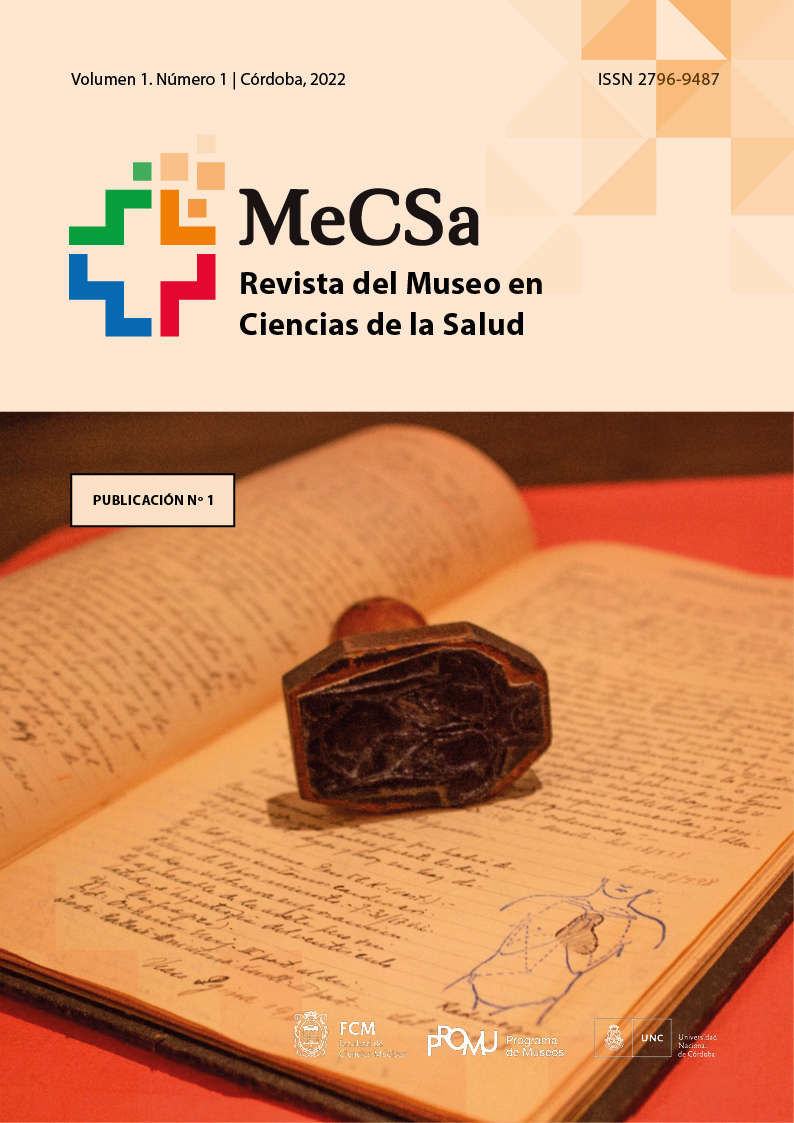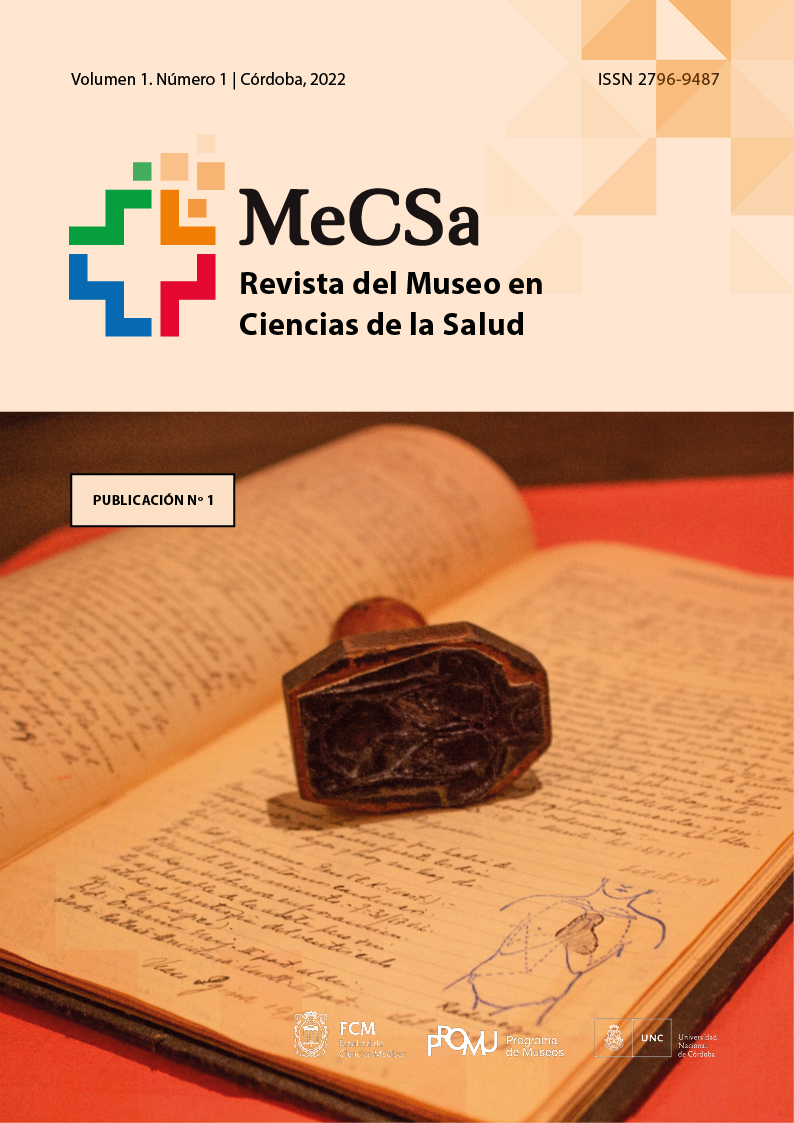Estudio descriptivo de la Microbiota Fúngica Aérea en el Museo en Ciencias de la Salud en tiempos de COVID-19
Keywords:
Aerial Fungal Microbiota, Museum of Health Sciences, conservationAbstract
The objective of the study is to characterize and count the aerial fungal microbiota of the different spaces of the Museum of Health Sciences (HNC/UNC) during the month of June 2020, because at that time some of the Museum rooms were under renovation and we wanted to find out if the movement of debris could generate an increase in the environmental microbiota that would have as a consequence a potential risk to the health of the workers and the collections preserved there, based on work we have done previously. . The applied method was sedimentation and the evaluation of Relative Humidity (RH) measured in percentages (%) and temperature measured in degrees Celsius (°C) in the different rooms. The results obtained have made it possible to demonstrate the presence of fungal microbiota in the different spaces, which are indicators of potential risks of deterioration and the presence of adverse microclimates.
References
BARNETT H. (1960) Illustrated genera of imperfect fungi. 2nd ed. Estados Unidos: Burgess Publishing Company. p. 225.
BOGOMOLOVA, EV &, KIRTSIDELI, I. (2009): Airborne fungi in four stations of the St. Petersburg Underground railway system. International Biodeterioration and Biodegradation; 63:156-61.
BORREGO ALONSO, S. F., & MOLINA VELOSO, A. (2014). Comportamiento de la aeromicrobiota en dos depósitos del Archivo Nacional de la República de Cuba durante 7 años de estudio. AUGMDOMUS, 6, 1–24. Recuperado a partir de https://revistas.unlp.edu.ar/domus/article/view/672
CANEVA, G., NUGARI, P.M & SALVADORI, O. (2000): Métodos de prevención del biodeterioro. En: La Biología en la Restauración. Nerea S.A. (Ed). pp. 149-164.
CAPPITELLI F & SORLINI C. (2010). Papers and Manuscripts. P 45-59. En: Mitchell R & McNamara CJ (ed) Cultural Heritage Microbiology: Fundamental Studies in Conservation Science. ASM Press, Washington, DC
CASADESÚS L & ROJAS TI. (1981). Micología. Manual Práctico. Ed. MES, Cuba: 99 p
PITT JL. (1988). A Laboratory guide to the common Penicillium species. Commonwealth Scientific and Industrial Research Organization. 183p.
PITT JL. (2000). A laboratory guide to common Penicillium species. Third Edition. Food Science, Australia: 197 p
RODRÍGUEZ GARCÍA, J. C.(2016), 'Microbiología aplicada: una herramienta para la conservación del Patrimonio Cultural', Conservar Património 24 (2016) 23-36, https://doi.org/10.14568/cp2015007.
SCHAECHTER M, NEIDHARDT F, INGRAHAM J. (2006). Microbe. Washington: American Society for Microbiology. p. 610
Published
Issue
Section
License
Copyright (c) 2023 Universidad Nacional de Córdoba

This work is licensed under a Creative Commons Attribution-NonCommercial 4.0 International License.
La Revista del Museo en Ciencias de la Salud de la Facultad de Ciencias Médicas de Córdoba adhiere a la política de Acceso Abierto y no cobra cargos a los autores para publicar, ni tampoco a lectores para acceder a los artículos publicados.



